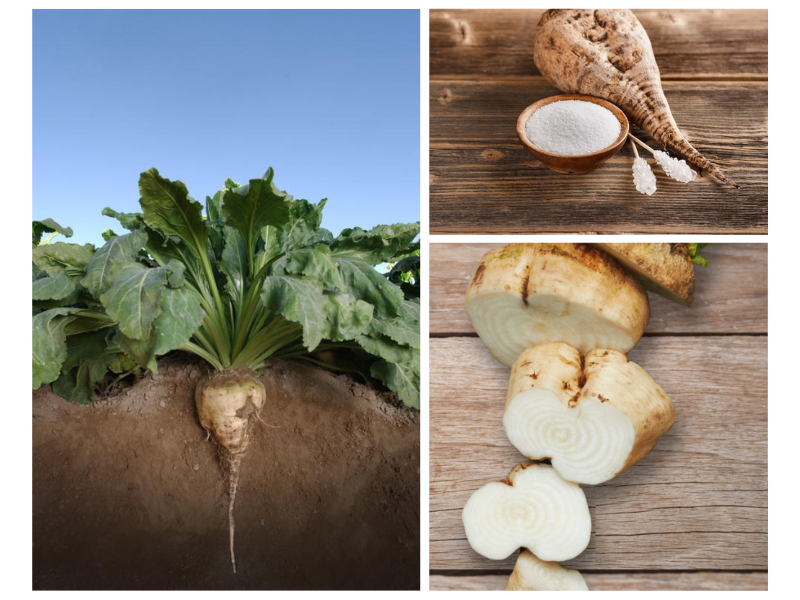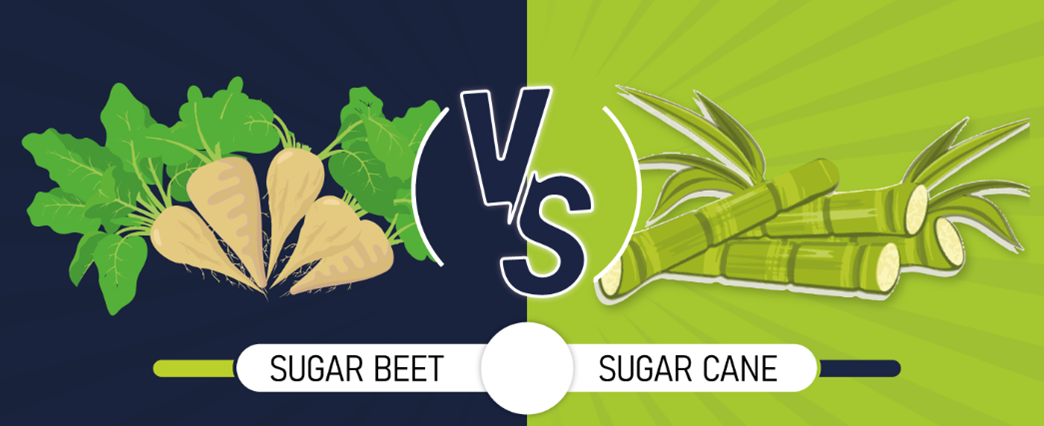Beet Sugar vs. Cane Sugar: Trick Differences You Should Know
The difference between beet sugar and cane sugar prolongs past their comparable chemical compositions; it includes their beginnings, manufacturing methods, and potential health and wellness effects. While both kinds of sugar offer as common sweeteners, their divergent histories-- beet sugar emerging in 19th century Europe and cane sugar tracing back to ancient Southeast Asia-- set the stage for a much deeper expedition of their manufacturing and dietary profiles.
Origins of Beet Sugar
Although beet sugar has actually become a considerable player in the worldwide sugar market, its beginnings can be mapped back to the very early 19th century when European researchers began checking out alternate sources of sugar. The essential minute happened in 1801 when German chemist Andreas Marggraf determined sugar in the white beet, a discovery that laid the groundwork for subsequent research study and industrial applications.
The process of refining beet sugar was additional progressed by his pupil, Franz Karl Achard, that developed the initial beet sugar factory in Prussia in 1806. This advancement accompanied the Napoleonic Battles, throughout which profession interruptions caused an increased demand for domestic sugar manufacturing in Europe. beet sugar vs cane sugar. Consequently, beet sugar got traction, particularly in countries like France and Germany

Origins of Cane Sugar
Cane sugar, stemmed from the sugarcane plant, has an abundant history that dates back hundreds of years, mainly in tropical regions where the plant thrives. The earliest proof of sugarcane growing can be traced to New Guinea and Southeast Asia around 8,000 BCE. From these beginnings, understanding of sugarcane spread to India, where it was first refined right into crystallized sugar by the fifth century CE.
As trade routes established, sugarcane got to Persia, the Mediterranean, and at some point Europe, where it was initially regarded as a high-end thing. The expansion of sugar production happened throughout the Islamic Golden Era, which facilitated the transfer of agricultural methods and technologies. By the 15th century, the demand for sugar surged, triggering European countries to develop ranches in the Caribbean and South America.
This shift not just transformed the agricultural landscape of these regions however additionally had substantial socio-economic effects, including the reliance on enslaved labor. Cane sugar, when an unusual product, ended up being a staple in diet plans worldwide, laying the foundation for the worldwide sugar market we acknowledge today. Comprehending its origins is vital for valuing cane sugar's effect on cooking practices and economic climates.
Production Processes
The production processes for both beet sugar and cane sugar involve several vital steps that change resources right into the crystalline sweeteners typically utilized today. For beet sugar, the procedure starts with gathering sugar beetss, which are after that washed and cut into thin cossettes. These cossettes are subjected to warm water extraction, enabling the sugar to liquify. The resulting juice goes through filtration, commonly entailing lime and co2 therapy to remove impurities. The clarified juice is then concentrated with evaporation, and formation occurs as the syrup cools down. The sugar crystals are separated from the molasses and dried out.
On the other hand, cane sugar manufacturing begins with the harvesting of sugarcane, which is crushed to remove the juice. This juice is additionally cleansed using lime and warmth. Adhering to filtration, the juice is evaporated to create a syrup, which is after that crystallized. The sugar crystals are centrifuged to divide them from the continuing to be syrup, understood as molasses, and ultimately dried. While both share resemblances, the source product and specific techniques result in distinctive qualities for beet and cane sugars, influencing the choices of consumers and suppliers alike.
Nutritional Contrast
When comparing the nutritional accounts of beet sugar and cane sugar, it is necessary to recognize that both sweeteners are mostly composed of sucrose, resulting in similar power web content and calorie values (beet sugar vs cane sugar). Both sorts of sugar commonly contain regarding 4 calories per gram, making them equal in regards to energy provision
In enhancement to sucrose, both beet and cane sugars contain trace amounts of minerals and vitamins; nonetheless, these amounts are minimal and do not considerably add to day-to-day dietary requirements. Both might include minute levels of potassium, calcium, and magnesium, however these are not existing in adequate amounts to supply any considerable health and wellness advantages.
Additionally, Continued the absence of fiber in both types of sugar underscores their function as pure sweeteners instead of sources of nutrition. beet sugar vs cane sugar. While they might provide a fast source of energy, their absence of crucial nutrients stresses the value of moderation in usage
Inevitably, from a simply nutritional point ofview, beet sugar and cane sugar are basically tantamount, making the option between both mostly reliant on aspects such as taste preference, schedule, and environmental factors to consider.
Wellness Implications
While beet sugar and cane sugar share comparable nutritional accounts, their health effects require consideration past mere structure. Both sugars are primarily made up of sucrose, which can lead to comparable metabolic effects; too much usage can add to weight problems, diabetes, and heart diseases. The source and manufacturing processes of these sugars may affect their overall health and wellness impact.
Beet sugar is frequently generated using questionable chemicals, such as phosphoric acid, which might leave trace residues. On the other hand, cane sugar undergoes an extra traditional refining process, which has a tendency to be much less chemical-intensive. The presence of these residues in beet sugar can raise issues for delicate populaces or those seeking to reduce go to my blog chemical direct exposure.

Additionally, the growing methods of sugar beetss and sugar cane might vary, with the previous typically involving even more extensive agricultural methods that can impact soil health and wellness and biodiversity. This farming context might affect the broader health implications of sugar consumption on a population level.
Ultimately, while both beet and cane sugars offer comparable functions in the diet plan, customers must think about the nuances of production and sourcing when making notified choices about their sugar intake.
Verdict

While both kinds of sugar serve as typical sugar, their divergent histories-- beet sugar arising in 19th century Europe and cane sugar tracing back to old Southeast Asia-- set the stage for a much deeper exploration of their production and dietary profiles.The procedure of refining beet sugar was further progressed by his pupil, Franz Karl Achard, that established the very first beet sugar manufacturing facility in Prussia in 1806.The production for both beet sugar and cane sugar include my company numerous vital actions that transform raw materials right into the crystalline sugar frequently used today. For beet sugar, the process starts with gathering sugar beetss, which are then cleaned and cut right into thin cossettes. The extraction refines additionally distinguish the 2, with beet sugar using warm water extraction and cane sugar involving crushing.